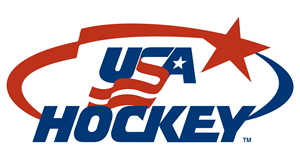American Development Model (ADM)
GUIDING PRINCIPLES:
The USA Hockey’s ADM is based upon the following guiding principles taken from research and best practices in youth sports, human development, coaching, and the sports sciences. They can be used to promote developmentally-appropriate athlete development, health and safety, and sustained physical activity throughout the lifespan.
1 EXCELLENCE TAKES TIME
The aim of the USA Hockey American Development Model is to help all individuals realize their athletic potential and utilize sport as a path toward an active and healthy lifestyle. Achieving this aim requires the application of the guiding principles and implementation of best practices outlined within each age group and stage of athlete development. In doing so, it is important to develop all facets of hockey performance; technical, tactical, physical and mental, while understanding that these factors are deeply interdependent. All this and instill a love of the game with opportunity to participate in Hockey for Life.
2 PHYSICAL LITERACY & FUNDAMENTALS
All youth should be encouraged to develop the confidence and competence in fundamental movement skills, basic sport skills and general athleticism from childhood throughout the lifespan in a FUN, engaging and progressively challenging atmosphere. The primary reasons that children initially engage in sport and physical activity is for fun, enjoyment, and to experience different activities.
3 BUILDING ATHLETICISM
Long-term athlete development programs should provide all youth with a range of training modes to enhance both health and related components of fitness to reduce the risk of injury. Most, if not all, components of fitness are trainable throughout childhood and adolescence.
4 SPECIALIZATION & EARLY SAMPLING
USA Hockey encourages an early sampling approach for youth that promotes and enhances a broad range of experiences in sports and physical activity. Well-rounded, multisport athletes have the highest potential to achieve. Early sampling does not hinder sports performance in hockey or other late specialization sports and has positive implications long-term sport involvement. Eventually, athletes should have the opportunity to either choose to specialize in their favorite sport or to continue at an appropriate level. Further highly specialized training in hockey can begin at about 14 – 16 years of age, given players have desire, motivation and abilities. Early specialization has been associated with negative long-term physical and mental health such as injury and burnout.
5 GROWTH AND INDIVIDUALIZATION
An understanding of normal growth, maturation and development is critical to delivering a quality sport program. In turn, long-term athlete development pathways should understand, appreciate and accommodate for the highly individualized and non-linear nature of the growth and development of youth.
6 PERIODIZATION
Athlete development should be guided by general training principles that allow for effective and efficient plans for a single practice or training session, as well as weekly, seasonal and yearly plans. This includes segmenting the calendar year into time intervals for preparation (pre-season), competition, and off-season sports and activities along with appropriate rest and recovery that optimize health and performance.
7 MENTAL, COGNITIVE AND EMOTIONAL DEVELOPMENT
Health, wellbeing, and positive youth development should always be the central tenet of the USA Hockey ADM. Youth of all ages, abilities and aspirations should engage in programs that promote both physical fitness and psychosocial wellbeing. While physical development can be visibly assessed, changes in stages of cognitive, emotional and moral development are harder to identify. Psychological development is also a long-term process that programs must consider inclusive of training and competition.
8 QUALITY COACHING
Quality coaches, using sound pedagogical approaches are fundamental to the success of long-term athlete development programs. Quality coaching is defined as the consistent application of integrated, inter- personal and intrapersonal knowledge to improve athletes’ competence, confidence, connection and character in specific coaching contexts.
9 SYSTEM ALIGNMENT AND INTEGRATION
We need a structure not only within and across USA Hockey organizations but also across all sporting bodies and physical education that is athlete-centered, coach driven, and administrator supported. Within USA Hockey, the framework for long-term athlete development is influenced by many factors. We have clubs, schools, and ice arena facilities all with varying interests. To maximize a player’s development needs, it’s important those entities work together and become mutually supportive as each has its part to play in advancing our game. We need a structure that is athlete-centered and looks at the individual player’s development. It is in the best interests of all members of USA Hockey to collaborate, align, and integrate in delivering the very best athlete development programs possible.
10 CONTINUOUS IMPROVEMENT
Coaches, administrators and all involved in our sport should seek continuous improvement by implementing new findings, innovations, and best practices from sports science, education and coaching. USA Hockey is committed to continuous improvement so that it insures ADM will reflect all evolving aspects of physical activity, sport and the welfare, well-being and performance of our athletes at all ages.
The ADM is a “cradle-to-grave” concept, and like many other facets of human development involves the process of growth, maturing, and progress in all facets of the sport. With that said, coaches often focus upon the skills and drills and teaching the game; however, overall athlete development involves not only sport-specific skills and an understanding of the game, but also understanding kids while developing general athleticism and fitness, fundamental movement skills, recovery, nutrition, and mental skills. This holistic athlete development approach addresses the four domains of sports performance.
Technical – sport skills
Tactical – game IQ
Physical – fitness and athleticism
Psychological – focus, motivation, etc.

Oops!
You have unsaved elements
Please save or cancel the pending changes to the elements within your page and then try saving again.


